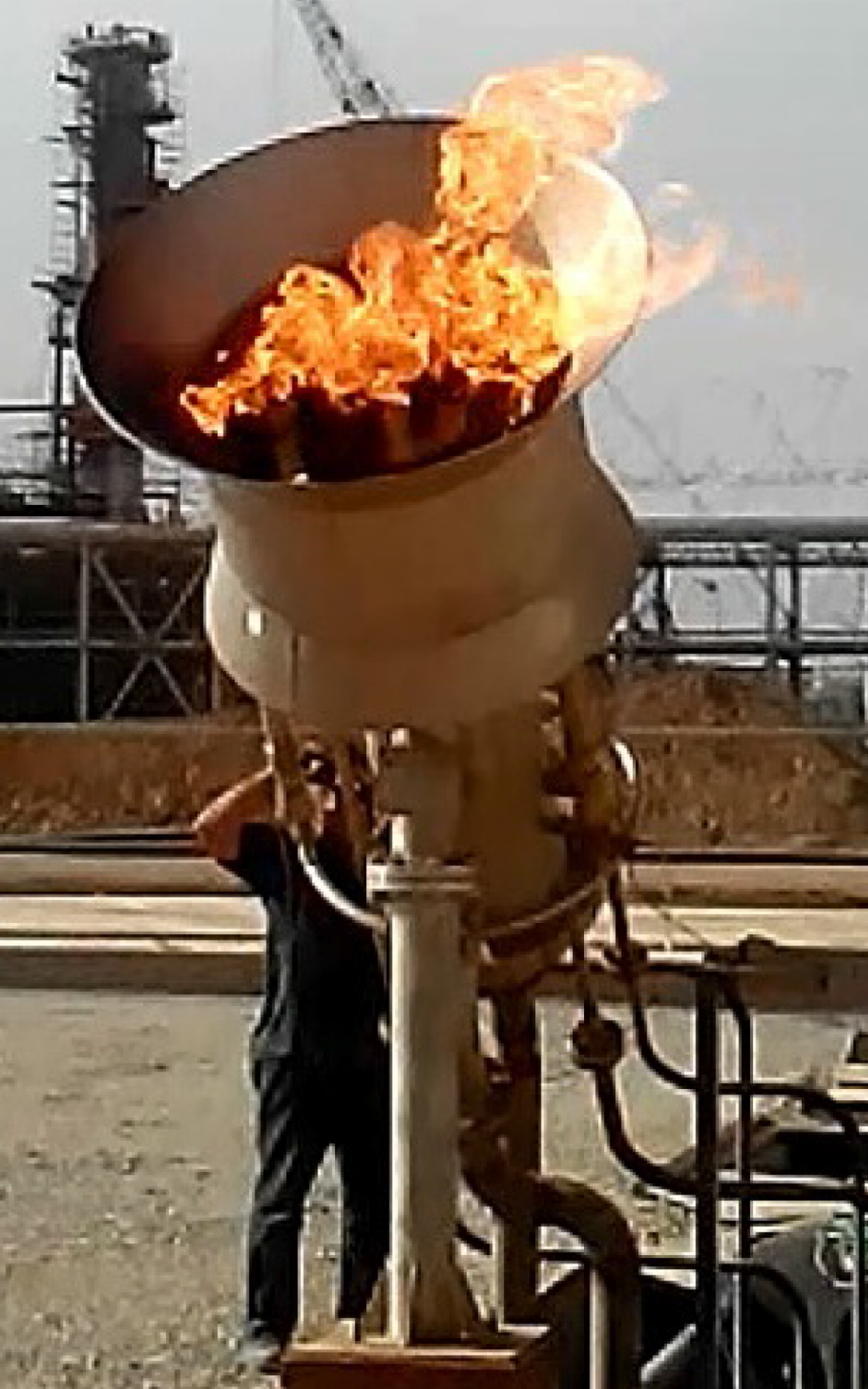The main use of a burn pit is to dispose of liquid or mixed liquid-vapours relieves as emergency flows or on an intermittent basis when blowing down pipelines or vessels.
The Burner was developed to flare liquid hydrocarbons without liquid fallout or soot formation (smoke).
These burners provide excellent service for various onshore applications that require high destruction efficiency of liquid hydrocarbons. When oil is flared, a high pressure media such as an air, gas, or steam is required to mechanically atomize the heavy hydrocarbons for proper and stable combustion.
The liquid in the pit burns and supports its own combustion by radiating heat back from the flame into the liquid at the top of the pool which then vaporizes and heats up further before burning in the flame.
The shape of the pool should be selected in order to meet the following constraints:
The Liquid burner must be angled to ensure that natural drainage occurs and often liquid relief or residual oil carry-over cannot remain in and it burns inside the burner.
The pit floor should be sloped away from the flare so that residual burning liquid is kept away from the pit burner.
The pit volume must be sufficient to contain the anticipated liquid loads accumulating over the design hold-up period.
At least two pilots are used for each pit burner head and for large pools extra pilots are spaced around the pit perimeter. For safety reasons it is important to monitor pilot flames and provide flame failure alarms. Burn pit flaring systems are located away from plant.



